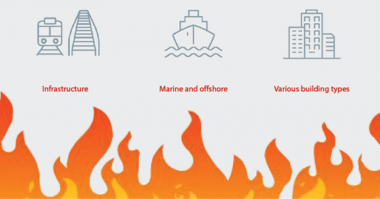Danfoss and The Pennsylvania State University at Philadelphia recently convened a workshop at Penn State’s School of Engineering campus at The Navy Yard in Philadelphia to examine results of a joint research-education initiative. Last year, Danfoss provided a grant to support the University’s 13-week Immersive Internship in Global Sustainability Practices and launched the collaborative Engineering Tomorrow’s Cities initiative to grow the global workforce needed to support a sustainable, low-carbon community built environment worldwide. The workshop marked the culmination of the internship program and Engineering Tomorrow’s Cities initiative.
The project was part of the Danfoss-Penn State effort to support the United Nations Economic Commission for Europe (UNECE) Framework Guidelines for Energy Efficiency Standards in Buildings, an initiative with global reach to foster a post-carbon economy and deliver on the UN’s Sustainable Development Goals, and was based at Penn State’s “Living Laboratory” building and energy research facility at The Navy Yard at Philadelphia. It was conducted under the direction of Dr. James Freihaut, professor of architectural engineering and technical director of the facility, and Dr. David Riley, director of the University’s GridSTAR Center and professor of architectural engineering.
The focus of the Engineering Tomorrow’s Cities initiative was on the deployment of innovative technologies and designs to reduce carbon emissions and highlight the important role of engineering in creating the sustainable commercial buildings and communities of tomorrow. Forty interns from 11 countries participated in the program, with research topics ranging from emissions prediction to microgrid operations, energy storage to building automation and the Internet of Things as an enabling platform, building controls to metering, and building external condition integration.
During the workshop, graduate and undergraduate students reported not only on their specific research, but also on the spirit that enriched the program — with students volunteering for long hours in their university and private sector assignments and continuing projects long after the formal close of the three-month initiative.
The discussion shed light on a broader generational shift in the field. “An oil crisis was impacting the world when I began my work decades ago,” Dr. Freihaut observed. “The mission was to cut energy dependency. Now the lead concerns are the climate threat, emission reduction, and greater recognition of challenges such as indoor air quality, whole building integration, grid-building integration, waste energy, and the like. Those concerns have transformed the research agenda, and, as a result, we are now able to get much more done with much less electrical power through innovation in building controls, variable speed technologies, and equipment design improvements that were unimagined when I started out. Leveraging the Internet is just beginning. And twenty years from now our research priorities will seem remote.”
According to Professor Riley, the Engineering Tomorrow’s Cities initiative provided a “unique experience” for participants of the internship program, and students underscored the project’s impact on their career orientation that the possibilities opened by research need to be deployed and that the engineering profession has a special responsibility to communicate, not compromise, build collaboration, and foster the evolution of research.
Briefed on the initiative, the Geneva-based UNECE Director for Sustainable Energy Scott Foster observed that “students from the Danfoss-Penn State project will seed enterprises around the world with the knowledge and knowhow a new global energy future requires.” Foster leads the UN’s Framework Guidelines project, and he noted that the goal of a low-carbon global economy presents a major scientific and educational challenge. “Much of what we need to succeed is known or just over the horizon. But we need to move that knowledge from the lab to the field and into the population centers growing rapidly around the world. The work Penn State and Danfoss have launched working together is a model that needs to be deployed worldwide and scaled up to match the challenge.”
Danfoss engineers technologies that enable the world of tomorrow to do more with less. We meet the growing need for infrastructure, food supply, energy efficiency and climate-friendly solutions. Our products and services are used in areas such as refrigeration, air conditioning, heating, motor control and mobile machinery. We are also active in the field of renewable energy as well as district heating infrastructure for cities and urban communities. Our innovative engineering dates back to 1933 and today Danfoss is a world-leader, employing more than 25,000 employees and serving customers in more than 100 countries. We are still privately held by the founding family. Read more about us at www.danfoss.com.





Comments